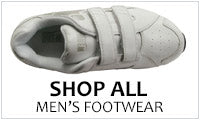A high arch in the foot, otherwise known as Cavus foot, occurs when there is a disproportionate amount of weight placed on the ball and heel of the foot. I tend to call Cavus feet "tripod" feet because plantar foot pressure is only distributed in two or three small areas of the plantar foot. Cavus foot can occur in one or both feet and can develop at any age. Although pain is the most frequent symptom of high arched feet, nonsurgical treatment will most likely resolve the issue if proactive steps are taken early on.
Symptoms
The most obvious way to determine a high arched foot is by noting the appearance of the arch when standing. The following symptoms may additionally be present in conjunction with Cavus foot:
- Hammertoes or claw toes
- Calluses on the foot
- Pain when standing or walking
- Heel tilts inward (this can lead to ankle sprains)
- Dragging the foot when walking (this is commonly linked to a neurological condition)
Diagnosis
A podiatrist diagnosis for high arched feet is vital; doctors can determine the primary cause of tripod feet. Locating the underlying cause will help generate the predicated course the arch may take. When diagnosing the patient, the doctor will analyze:
- The patient's family history
- The presence of hammertoes and claw toes
- Overall foot muscle strength
- General wear and tear of the foot
- Patient's walking pattern
- Possible neurologic condition
An X-ray may be ordered upon request depending on the deliverables noted above. If Cavus foot is not the result of a neurological condition, it will most likely not worsen or change in appearance.
Treatment
The most important treatment for the majority of issues caused by high arches is supportive shoes. These shoes must be deep enough and have good shock absorbing capabilities. Well fit orthotics will help distribute pressure evenly throughout the bottom of the entire foot thereby reducing high pressure points. Custom orthotics and braces fit specifically for you and designed by your podiatrist will help stabilize the foot and ankle. If these non-surgical steps fail to relieve pain, a surgical procedure may be needed to help compensate for the imbalanced weakness in the foot. The surgery will vary case-to-case and ultimately be decided by your podiatrist. Foot pain is never pleasant or normal. Taking hands-on action now can lead to a lifetime of healthy and happy feet.
Written by
Dr. Jeffrey S. Hurless
DPM, FACFAS Board Certified Foot & Ankle Surgeon/Podiatrist
Medical Director, HealthyFeetStore.com



